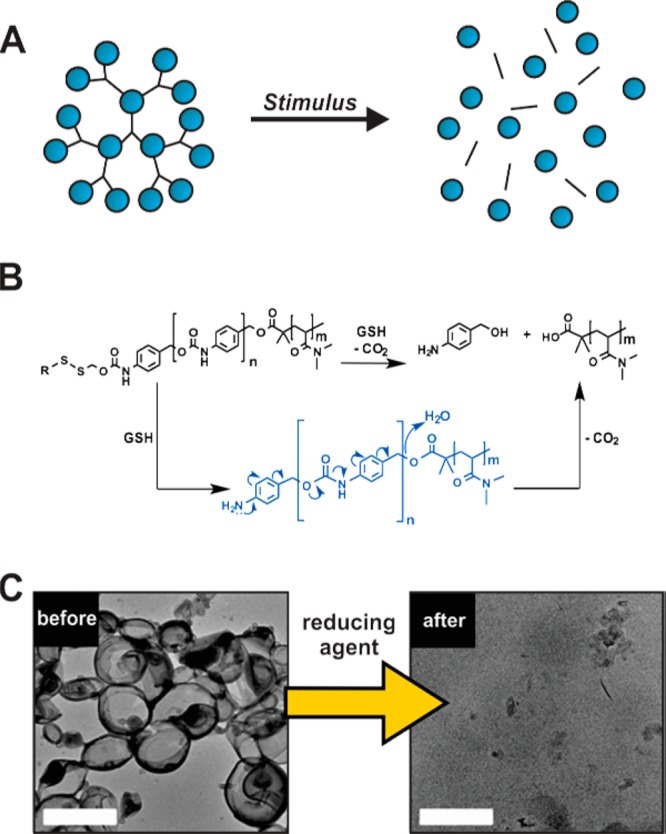Figure 4.

Stimuli-driven disassembly processes. (A) Cartoon illustrating a generic disassembly event in which a nanoscale material breaks down into smaller fragments, releasing encapsulated or chemically appended drugs (blue spheres). (B) A literature example of a deploymerizaton event that is initiatied under reductive conditions. Here, polymersomes assembled from block copolymers composed of a self-immolative poly(benzyl carbamate) block and a hydrophilic poly(N,N-dimethylacrylamide) (PDMA) block. In this report, the self-immolative block was caged with either perylen-3-yl, o-nitrobenzyl, or disulfide moieties (as depicted), which uncage in response to visible light (420 nm), UV light (365 nm), or reductive agents, respectively. Upon activation, the block copolymer depolymerizes into 4-aminobenzyl alcohol, carbon dioxide, and PDMA. These polymersomes were also loaded with doxorubicin or campothecin, and payload release coincident with depolymerization was observed. (C) Transmission electron microscopy of the block copolymer before and after treatment with dithiothreitol. Scale bars are 1 μm. Panels B and C are adapted from Liu et al.60 with permission from the American Chemical Society.
